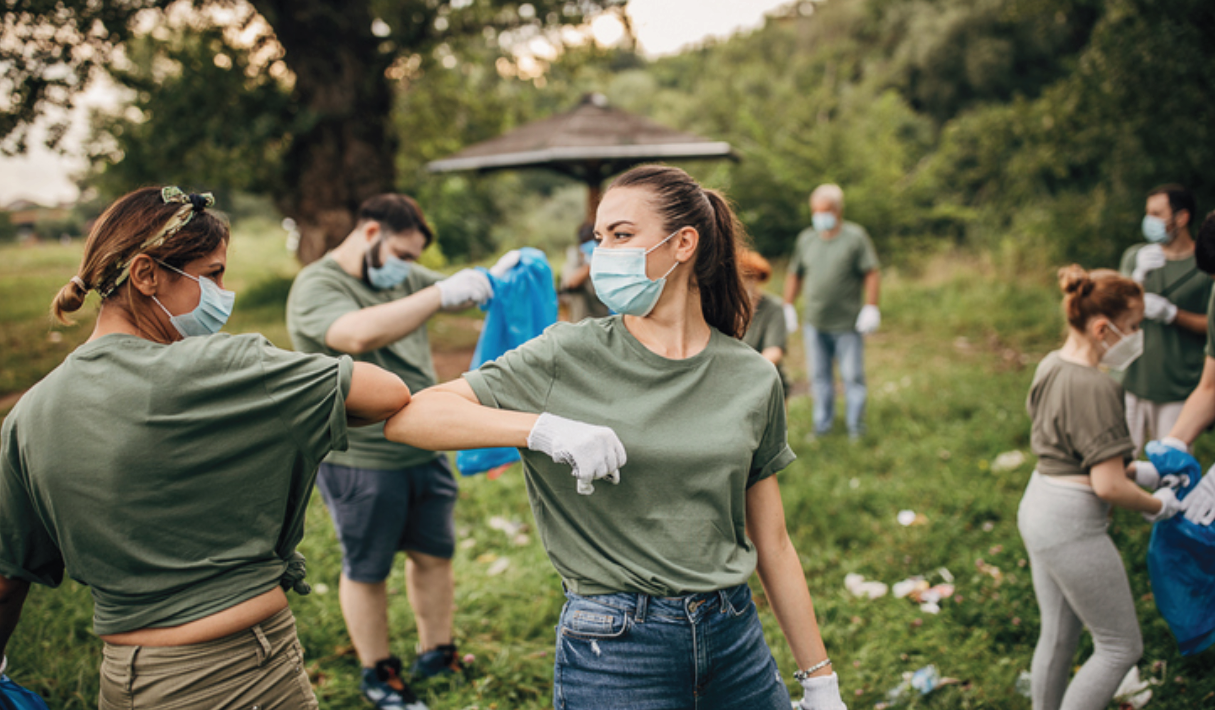With Black Friday just a week away, giving is top of mind. We know that giving is good because it helps others, but what makes giving even more powerful is that its benefits go two ways. Going beyond ourselves and stepping out of our comfort zones to serve others is one of the most effective and proven ways to boost our own well-being, transforming the giver as much as the recipient.
Just how powerful is this two-way effect? One study demonstrated that volunteering at least once a week yields improvements to well-being tantamount to your salary increasing from $20,000 to $75,000. A Harvard Business School study found that students who were told to spend a small amount of money on someone else were happier than students who were told to spend it on themselves.
And a University of Exeter Medical School study found that volunteering was connected to lower rates of depression, higher reports of well-being, and a significant reduction in mortality risk.
This guide will help you reframe limiting beliefs about giving and volunteering and introduce Microsteps that help you give back, with benefits that extend both inward and outward. You can also download the complete guide.
Find Small Ways to Give
It’s all too easy to decide we don’t have time to give – especially when we’re managing challenges of our own and navigating the ongoing stress and uncertainty of the pandemic. And when the world is facing such big problems, what difference could we possibly make?
We might also have limiting beliefs that get in the way of our being able to make a difference in small ways that count. For example, we might think, “I’m just one person so I can’t make a difference” or “I don’t have time to volunteer.” Or we simply might not know where to start.
But as former President George H.W. Bush put it, “The solution to each problem that confronts us begins with an individual who steps forward and who says, ‘I can help.”‘ By shifting our mindset away from big solutions to instead focus on small steps, we can move past some of the common limiting beliefs that hold us back. Research shows that when we spend time on others, our sense of our own time actually expands.
Microsteps:
Find one small way to give that draws on your own talents.
Think about a skill you have and find a way to share it with someone else. Focusing on what you can do now will push back on any feelings of helplessness and allow you to have an impact.
Perform one small act of kindness for someone each day.
From holding the door for a stranger to lending a hand to a colleague, these micromoments of giving will make others feel valued and fill you with a sense of purpose.
Get involved in one issue you find personally meaningful.
Passively watching increases feelings of helplessness, which in turn fuels outrage and stress. Take a few minutes to research an issue you care about. Chances are, there will be groups that can show you how to channel your frustration into action.
Tap Into Empathy
Empathy is when we can feel another person’s feelings along with them. It is a skill we can nurture, and one that leads to action by bringing us closer to other people’s experiences, challenges and desires. It’s one of the greatest gifts we can give each other. And every conversation is an opportunity for empathy. With Microsteps, we can take surface-level interactions much deeper.
Start your next conversation with a question about the other person.
Approach the person with genuine curiosity. What might you learn from them? How might they inspire you?
The next time you connect with a colleague, swap “How are you?” for a deeper question.
Questions like “What’s on your mind?” or “What challenges are you facing now?” can give you the chance to learn about and honor their experiences.
Ask someone what they’re doing to give back.
Social distancing can make us feel further apart, not just physically but emotionally. Bridge the distance with a simple question – you might learn something, or get inspired by ways they’re giving back and making a difference.
Give the Gift of Connection
Human beings are hardwired to connect. Our relationships with others-from friends and family to partners and coworkers-are in many ways the foundation of our lives. These relationships are also a huge potential source of giving, compassion and joy.
How do we do it? We start small. Instead of starting an exchange by sharing your opinion, ask the other person to share theirs. Ask a question. Turn a transactional moment into something more-when you’re at your favorite coffee place making your usual order, or dialing into a call center to get tech support, take the opportunity to make a human connection. When we examine our habits, we may be surprised at how wrapped up in ourselves we can be, how many barriers we’ve erected. And we may be equally surprised at how easy it is to shift gears and genuinely connect.
Each day, spend time on someone else, even if you’re busy.
Helping, listening, or simply being present for someone else can benefit both you and whoever you’re helping. Research shows that when we spend time on others, our sense of our own time actually expands.
Start a group text with friends to stay connected.
Science shows there’s power in consistent kinship, even if it’s a simple daily “thinking of you” message.
Each time you’re out, say hello to someone new.
Even a quick chat with a stranger or a momentary bond with someone new can energize us and foster a sense of fulfillment – especially as we emerge from the isolation of the pandemic.


